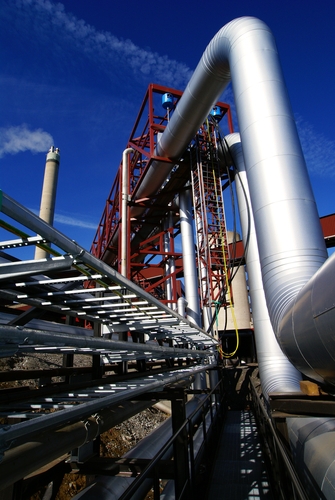Why only 3D laser scanning can lead to accurate P&IDs

Most petrochemical and process services facilities need piping and instrumental diagrams (P&IDs) to have a precise picture of the plants' equipment. Without this diagram, facility managers can find themselves in the dark regarding the relationship between piping and instrumentation components at the plant, which can only cause issues with equipment planning and maintenance.
Many engineers are trained in how to accurately draw a P&ID, yet using traditional measurement techniques and creating a diagram from hand can cause many problems with accuracy. Even using templates and drawing tools to create P&IDs can end up resulting in issues with precision. However, there is one measurement technique that can lead to the development of pinpoint P&IDs: 3D laser scanning.
Why P&IDs are important
First, these diagrams are essential to the function of a petrochemical plant. P&IDs are basic yet critical documents that showcase the complete network of pipes and equipment components at a facility. These documents are the basis for many of a plant's workings, such as the replacement of equipment.
According to online resource the Engineering ToolBox, P&IDs contain information on flow directions, equipment capacity and even the physical sequence of machinery. Many elements of instruments – from equipment number designations to valve identifications – are represented in a P&ID for a petrochemical facility. However, the Engineering ToolBox noted P&IDs often don't contain extensive information, such as notes or pressure temperature within machinery. P&IDs only showcase the essential elements of the equipment and the interlocks between machinery. Essentially, only those factors that impact the plant are documented in P&IDs, an article on the American Institute of Chemical Engineers' website.
Anything that is off with the P&ID can have drastic consequences for the business into the long term. Engineers and plant managers rely on P&IDs to interpret issues.
How laser scanners help petrochemical plants
Because of the critical importance of these documents, petrochemical and process services plants can't afford to have inaccurate P&IDs. The only way to develop highly accurate P&IDs is through 3D laser scanning.
Laser scanners are objective tools that collect as-is data of existing equipment, instrumentation and sites. This information can then be used to create accurate P&IDs for petrochemical companies.
By holding on to traditional measurement techniques, engineers must trust that the information is exact. There is always the possibility that they will use possibly faulty data when they draw P&IDs. In addition, precision problems can be exacerbated if engineers don't use drawing tools effectively, or if this type of software doesn't have all of the features needed to make a precise diagram.
P&IDs also often have supporting documents. If engineers work off of inaccurate data, these materials can also be wrong, leading to even further issues. These documents include process flow drawings (PFDs) and functional or process control materials, just to name a few, according to the AIChE.
Engineers and plant managers should partner with a 3D laser scanning and modeling company, such as SmartGeoMetrics, to create accurate P&IDs.
